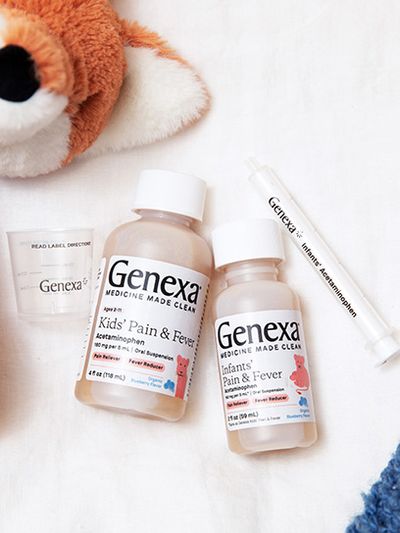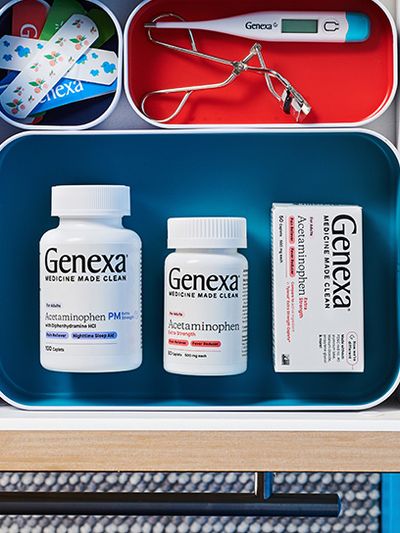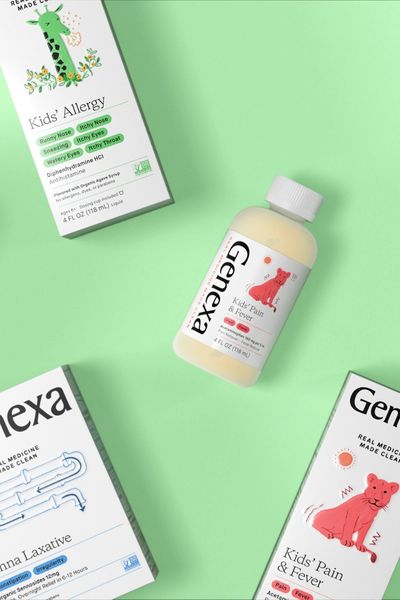About Our Medicine
What does Genexa mean by clean medicine?
Clean medicine is medicine made with the same active ingredients you need, but without the artificial ones you don’t.
Can I give Genexa to someone outside of the age range on the product’s Drug Facts?
Our medicines are safe when taken as directed, and only use the clean inactive ingredients you deserve. However, we cannot recommend administering to anyone outside of the age range provided on the product’s Drug Facts. We recommend speaking with a health professional if you have any specific questions regarding age.
Can I take Genexa while pregnant or breast feeding?
Our medicines are safe when taken as directed, and always made with the clean inactive ingredients people deserve. However, every person is different, so we recommend pregnant or nursing women speaking with a health professional before taking any medication or supplement.
Can I give Genexa to my pet?
Our formulas have not been researched or approved to use for our furry friends. Please be sure to check with your vet prior to giving any of our products to your pet.
Are Genexa products gluten, soy, lactose, nut and dairy-free?
We are proud to offer medicines that are certified gluten-free and free of soy, lactose, nuts and dairy.
Are Genexa products safe for daily use?
While Genexa medicines are safe when used as directed and only made with the clean inactive ingredients you deserve, they are over the counter and not intended as a long-term solution for a chronic problem. Follow the directions and dosing information under the Drug Facts, and consult with your doctor for any questions you may have before use.
About our Homeopathic Products
What is homeopathic potency?
Homeopathic potency refers to the strength of the homeopathic medicine or ingredient in a homeopathic formula. Generally, the higher the potency, the higher the strength of the homeopathic medicine. The homeopathic process of potentization brings out the latent healing power of the substance and helps to eliminate undesirable side effects of the homeopathic medicine. Homeopathic medicines are manufactured in compliance with U.S. Food and Drug Administration regulations and the Homeopathic Pharmacopoeia of the United States (HPUS)
How are homeopathic medicines made?
Homeopathic medicines are obtained from a precise and controlled process of successive homeopathic dilutions and succussions. They are commonly made by crushing a plant, animal, or mineral substance, then placing it into a solvent such as grain alcohol. The extract is then further diluted in a mixture of alcohol and water. (Solid products can be diluted using lactose.) The process is repeated many times to achieve a therapeutic dilution. After each dilution the mixture is vigorously agitated to deliver a calibrated amount of shaking. This is called succussion. Both succussion and dilution are critical to assuring the therapeutic effect of the medicine. The process of preparing non-soluble substances uses lactated milk sugar instead of alcohol and is called trituration.
What are the official homeopathic ingredient names?
The official homeopathic ingredient name generally appears in Latin, as is the case with “Arnica Montana.” The Latin names are systematic and unique with ingredient standards of identity and purity set by the Homoeopathic Pharmacopoeia of the United States (HPUS). If the letters “HPUS” appear after a drug name, that indicates that an official monograph (an approved document that sets forth the standards and specifications for a drug) exists for the drug, and it has been studied and approved by homeopathic experts and meets the HPUS standard.
What does the “X” listed after the active ingredient stand for?
The most common potency used in combination homeopathic medicines are “X” potencies or decimal potencies. The 1X is obtained by mixing 1 part of the Mother Tincture with 9 parts of ethanol in a new vial and then vigorously shaking the solution (succussion). The result is a 1/10 dilution of the plant (the Mother Tincture being a 1/10 dilution of the plant itself). The 2X is obtained by mixing 1 part of the 1X with 9 parts of ethanol in a new vial and succussing. Recurrently, the 3X is obtained by mixing 1 part of the 2C with 9 parts of ethanol in a new vial and succussing.
What does the “C” listed after the active ingredient stand for?
C dilutions are decimal dilutions prepared similarly to X dilutions, but the factor of dilution is only 1/100 from one dilution to the next.




